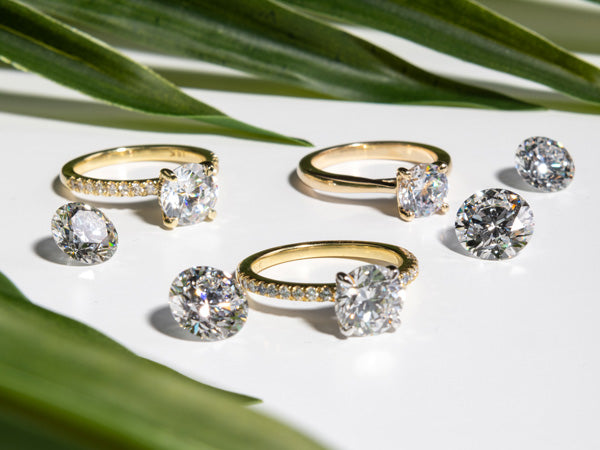Introduction to Lab-Grown Diamonds
wwF and lab grown diamonds have arisen as a sustainable alternative to traditional mined diamonds. Created utilizing advanced innovation, these diamonds offer the same physical and chemical properties as their natural counterparts yet with a significantly decreased environmental impact. This innovation aligns with the standards of sustainability and ethical obtaining, making lab-grown diamonds an appealing choice for environmentally cognizant buyers and organizations alike.
WWF’s Commitment to Sustainability
The World Untamed life Asset (WWF) is a leading global organization dedicated to rationing nature and lessening the impact of human activities on the environment. WWF’s initiatives span various areas, including safeguarding endangered species, combating climate change, and advancing sustainable practices. The organization advocates for ethical and eco-accommodating arrangements across various enterprises, making lab-grown diamonds an area of interest in its sustainability efforts.
The Environmental Impact of Traditional Diamond Mining
Traditional diamond mining presents significant environmental challenges. The extraction interaction includes eliminating large amounts of earth, which can lead to habitat obliteration, soil disintegration, and water contamination. Additionally, mining operations often bring about the displacement of local networks and untamed life. These worries have incited a developing demand for more sustainable alternatives, for example, lab-grown diamonds, which aim to mitigate these environmental impacts.
Lab-Grown Diamonds as an Eco-Accommodating Alternative
Lab-grown diamonds offer a convincing answer for the environmental issues associated with traditional mining. By creating diamonds in controlled laboratory settings, the requirement for broad earth excavation and habitat obliteration is eliminated. The most common way of creating lab-grown diamonds includes minimal utilization of natural assets and lessens the carbon impression compared to traditional mining techniques. This eco-accommodating approach aligns with WWF’s main goal to advance sustainable practices and safeguard the environment.
WWF’s Part in Advancing Sustainable Practices
WWF has actively supported and advanced sustainable practices across various ventures, including the adornments sector. The organization’s advocacy for ethical obtaining and environmental obligation has prompted increased awareness and adoption of sustainable alternatives, for example, lab-grown diamonds. By collaborating with industry stakeholders and raising public awareness, WWF aims to drive positive change and encourage more sustainable choices in the diamond market.
Collaborations Among WWF and Lab-Grown Diamond Companies
Several lab-grown diamond companies have partnered with WWF to support conservation efforts and advance sustainability. These collaborations often include initiatives, for example, donating a portion of sales to WWF’s conservation projects, supporting natural life insurance programs, and raising awareness about the advantages of lab-grown diamonds. By aligning their strategic policies with WWF’s main goal, these companies add to the broader goal of environmental conservation and sustainability.
The Ethical Appeal of Lab-Grown Diamonds
In addition to their environmental advantages, lab diamonds also address ethical worries associated with traditional mining. The diamond business has faced examination over issues, for example, struggle diamonds and human freedoms abuses in mining locales. Lab-grown diamonds offer a transparent and ethical alternative, as they are created without the dangers associated with traditional diamond mining. This ethical appeal resonates with purchasers who prioritize dependable obtaining and wish to support practices that align with WWF’s values.
Shopper Awareness and Demand for Sustainable Items
The developing shopper demand for sustainable and ethically obtained items has affected various enterprises, including the diamond market. Shoppers are increasingly looking for items that align with their values, and lab-grown diamonds have arisen as a popular choice for those prioritizing environmental and ethical considerations. This change in purchaser inclinations supports WWF’s efforts to advance sustainability and drive positive change inside the business.
The Eventual fate of Lab-Grown Diamonds and WWF’s Job
Looking ahead, the eventual fate of lab-grown diamonds appears encouraging, with proceeded with advancements in innovation and increasing shopper awareness. WWF’s job in advancing sustainable practices and supporting innovative arrangements will remain crucial in driving positive change. By fostering collaborations with lab-grown diamond companies and advocating for dependable practices, WWF can add to the development of the lab-grown diamond market and support broader environmental and ethical goals.
Conclusion
In conclusion, the partnership among WWF and lab-grown diamonds addresses a significant stage towards advancing sustainability and ethical practices inside the diamond business. Lab-grown diamonds offer a viable alternative to traditional mining, addressing environmental and ethical worries while aligning with WWF’s main goal to safeguard the planet. As buyer awareness and demand for sustainable items keep on developing, the collaboration among WWF and lab-grown diamond companies will play a vital job in driving positive change and fostering a more mindful and eco-accommodating diamond market.

